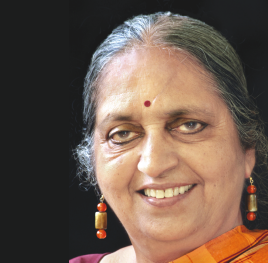Twenty five years ago IWPC was created as a second home for women journalists–a space of their own where they could let down their
hair, indulge in home cooked food and meet newsmakers for discussions. Though most of the founder members were established journalists, there
were a large number of women on the desk and in language newspaperswho did not getthe opportunity to venture out and experience life as journalists. The shy, younger journalists, we felt, needed a quieter space of their own with opportunities to meet
parliamentarians,social activists and othersfrom the world of art and literature. We also wanted to be different from the Press Club by taking up women’s issues and doing our own in-depth investigative reportsthat couldbe released to the media. In 1994, we decided to make IWPC a spirited but booze less club.We did not have the meansto get a liquor license and also wanted to be different from other clubs! In any case there was the Press Club round the cornerforthosewho likedtheirglass of cheer! Those early days are memorable. We brought
durees and cushions from home, squatted on the floor and discussed giving shape and substance to our second home. We went hunting for unwanted table, chairs, furniture and books and newspapers for our library. It was a happy band of women not riven by politics and
ideologies. Everyone was pushing the other to assume leadership but all contributed to the growth of the club.
And slowly it grew. Old furniture gleaned with a new upholstered look as the more artistic among us took charge ofrenovation.Computerstoo came in and it eased filing of stories with coffee, tea, lunches and snacks on command. The excellent cuisine and the winter lunches on the greening lawns under colourful umbrellas were a hit. Diwali, Christmas and New Year were special occasions!Women set up their own stalls and donated the income to the club.Iremembersetting up a dosa stall and my mother rolled out the first crisp dosas. A variety of glass bangles and trinketsformiladywere abigdraw. We had our battlesin ourrespective newspapers. As one of the first woman journaliststo get into mainstream media and reporting in the early sixties, I had difficulty initially proving to my editors that I was a serious professional, determined to stay on andmakemymark in the Times of India. The political beat and important ministries like foreign office, economic, defence were with men. The only woman journalist in the newspaper for eight years, I found myself pushed into reporting on health, education, environment, women’sissues and rural development and
began to specialize on social issues.I became the pioneer ‘development’journalist. By the seventies there were many more women in journalism, both in reporting and on the desk. Women working for English media houses have done better than theirsistersin language newspapers where there isstill a male bias. They are paid less and many of them were taken on short contracts. It is still an unequal world for them. However, male chauvinism is on the decline and there is greater acceptance ofwomen journalists and their competence. In fact on television news, women dominate.
The male glad eye has always existed in English and regional media. However, we learnt to ignore the advances and passes and march on professionally without letting out on lecherousseniors. It required a Me toomovementtospeak up and beheard.
Propelling Nascent Dreams in Journalism

